Decoding Raj & DK, the unlikeliest Bollywood directors to claim the ‘family audience’!
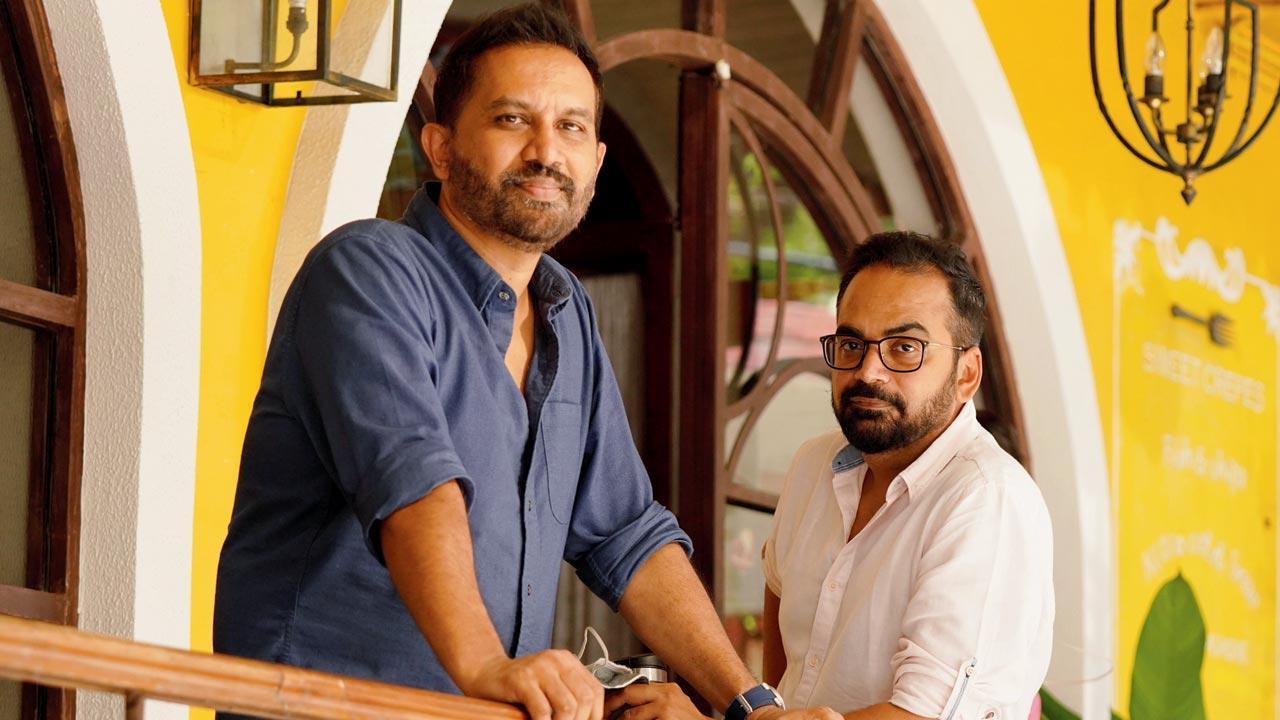
(From left) Director-duo Raj Nidimoru and Krishna DK
If this was a Bollywood script, a la DDLJ, we’d start from the exact moment Raj, first locks eyes with Krishna (since no Simran) — perhaps coming down the steps of Tirupati’s Sri Venkateswara University College of Engineering (SVUCE), on their first day in college, with an imagined mandolin tune playing in the background. Somewhere, knowing, because destiny is such, that they’d live together to make Bollywood movies, for babies, happily ever after!
But of course, this is not a Bollywood script. Neither do the typically indie-looking, under-stated Raj Nidimoru and Krishna DK, former engineering classmates from SVUCE, seem like massy Bollywood directors. But they’re as A-list as it gets. If you consider their filmography, that features top-shelf
traditional to new Bollywood altogether.
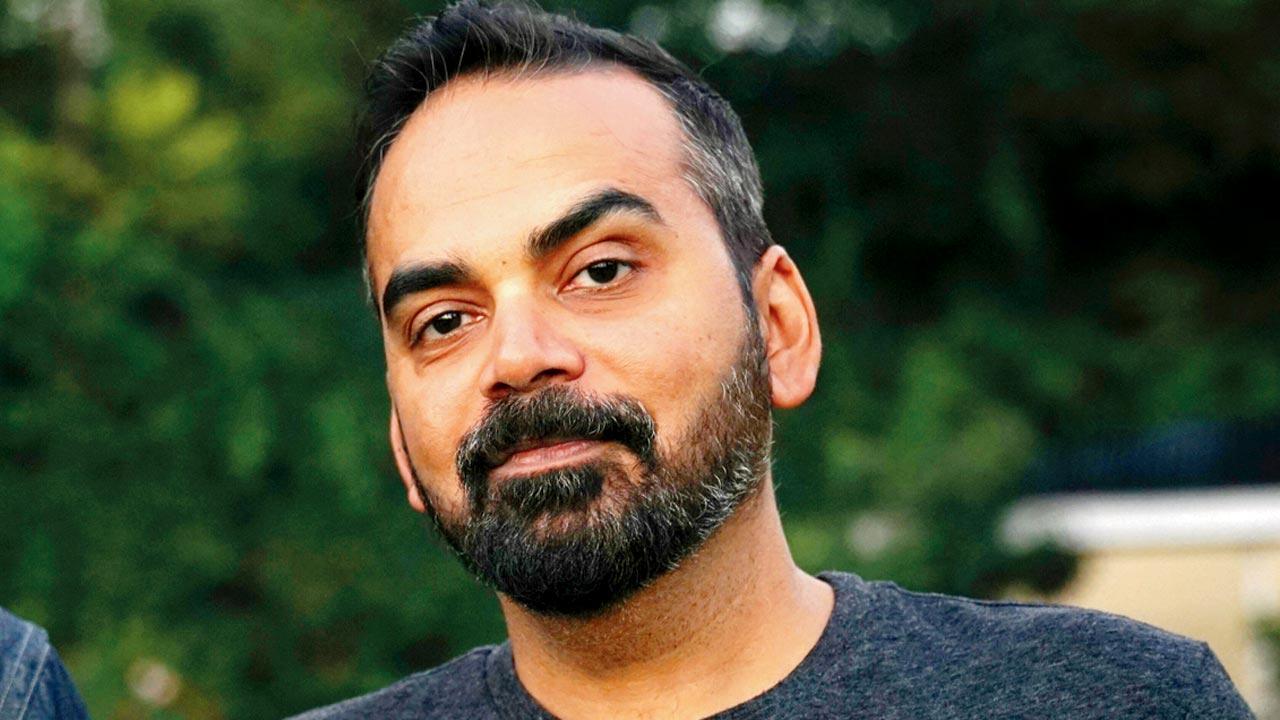 Krishna DK
Krishna DK
Starting with Saif Ali Khan (Go Goa Gone, 2013), then pairing Saif with Govinda (Happy Ending, 2014), going berserk with Sidharth Malhotra (A Gentleman, 2017), a li’l bit. Casting Rajkummar Rao, Shraddha Kapoor in the year’s sleeper super-hit, Stree (2018).
Not to forget, placing late ’90s Satya’s Manoj Bajpayee back into stratospheric stardom, with The Family Man, Seasons 1 (2019) & 2 (2021). There’s also a Shah Rukh Khan film lined up, which will go on floors, they say, once SRK’s schedules match — since the superstar has enjoyed their script narration, and is very much up for the part.
Who’re these guys, man, and how did their stars so align in a city where everyone sits around with a script? No, there was no meet-cute moment in college, when they first met. Of which they don’t even remember exactly when, or how. As it happens only in desi Nerd Land, they were quiz teammates in college. “Not those general knowledge type quizzes, haan?” DK clarifies. “Music and movie quizzes — where they play songs and ask to identify the singer or composer, or name the movie [from a clip], or who is the director, that kind of stuff.”
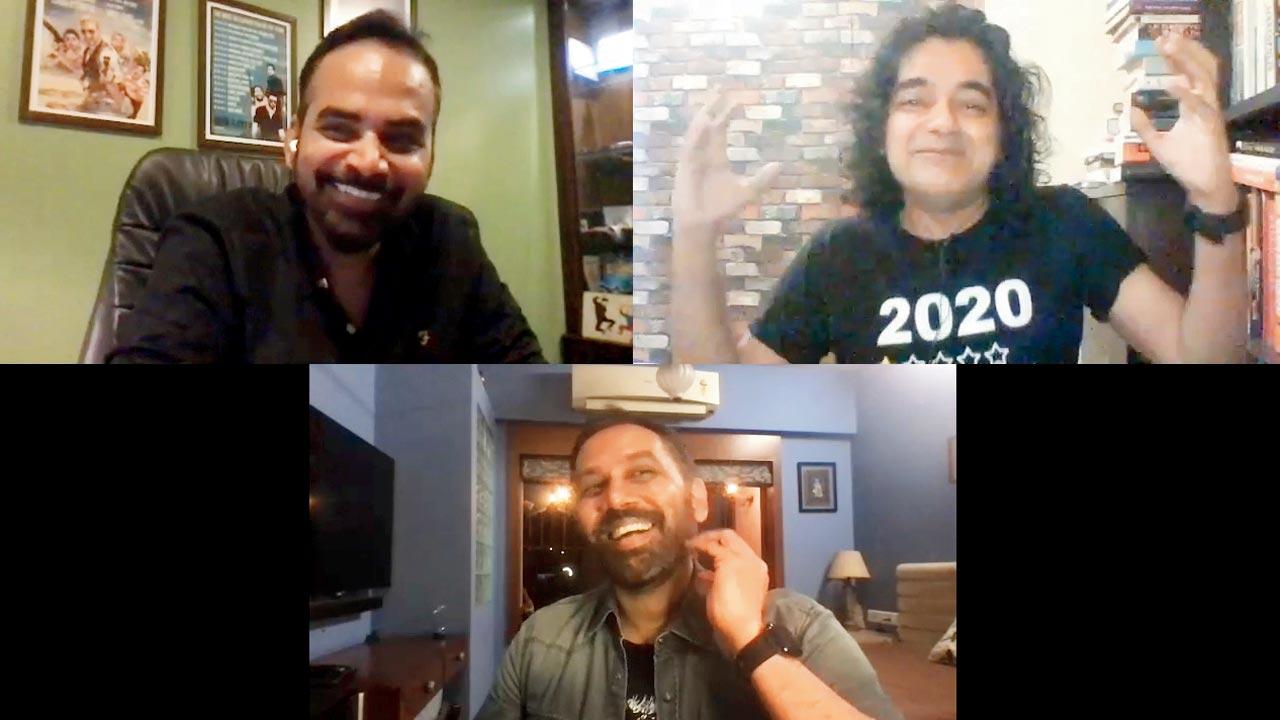 Entertainment editor Mayank Shekhar connects with the filmmaker duo over Zoom
Entertainment editor Mayank Shekhar connects with the filmmaker duo over Zoom
This is where I’m guessing they got to collectively express their film geekery — about as much outlet the Nerd Land in the ’90s allowed you, once you’ve signed up for an engineering programme, I guess. The next destination is obviously a ‘starting salary’ (‘package’, best if earned in dollars), pursuing computer programming in the US, living thence the great suburban American dream. Ditto for Raj & DK.
Both are originally from Andhra Pradesh. Telugu is their mother tongue, although English is as much their first language. They’re trained engineers, of course, who eventually moved to Mumbai, to make movies. Starting off with an independent film (99, starring Kunal Kemmu), in Hindi — hardly their strongly suit, in fact decidedly their weak link; gradually veering toward more mainstream Bollywood.
Sounds like both Ram Gopal Varma and Nagesh Kukunoor to me. What’s happening in Andhra — you hardly hear similar stories about directors from other states in the South! “Well, I don’t think Ram Gopal Varma is the same graph [as us]. He went directly with an explosive [start],” Raj corrects me. And he’s right.
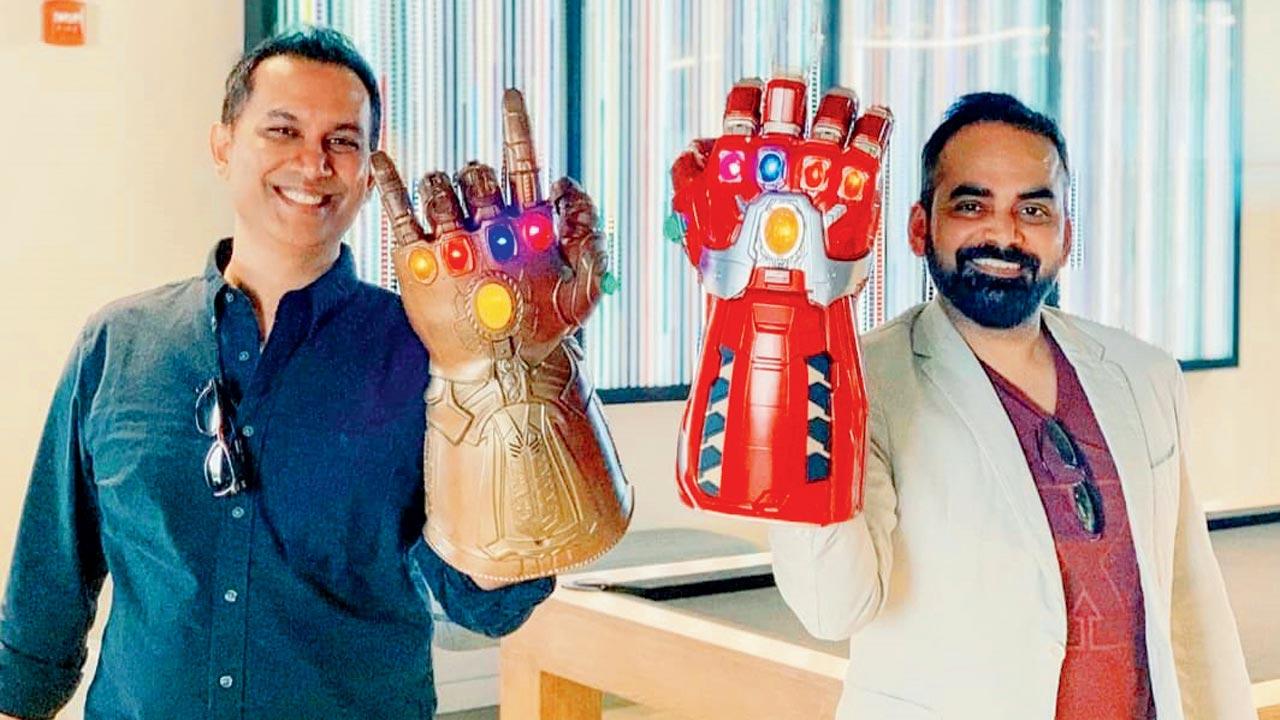
Varma’s debut Shiva (1990) was indie, only for a Hindi audience. It starred Nagarjuna, which is blockbuster-grade in Telugu cinema already. The stunning response to which had Bollywood roll out the red carpet for Varma. Although Raj admits, “With Kukunoor, initially, yes, as engineers-turned-screen writers, we were seeing parallels quite a bit, actually. Because he produced Hyderabad Blues, when we were [making our debut film] Flavors in the US.”
What was the flavour of Raj & DK’s debut film like? It had a very American Born Confused Desi (ABCD) vibe to it — a growing sub-genre in the early noughties, with stories about Indian expats and migrants, before Indian-American found more mainstream space in American pop-culture about a decade after.
These movie DVDs were usually available at side sections of desi rental stores in Indian neighbourhoods abroad, that otherwise stocked popular Indian cinema. Low-budget English language indies would include titles like American Desi, American Chai, Green Card Fever, Leela… With local female actors like Sheetal Sheth, Purva Bedi, and often a male character called Krishna, snipped to Krish, who’s confused between both his identities. At least that’s my perfunctory memory of it.
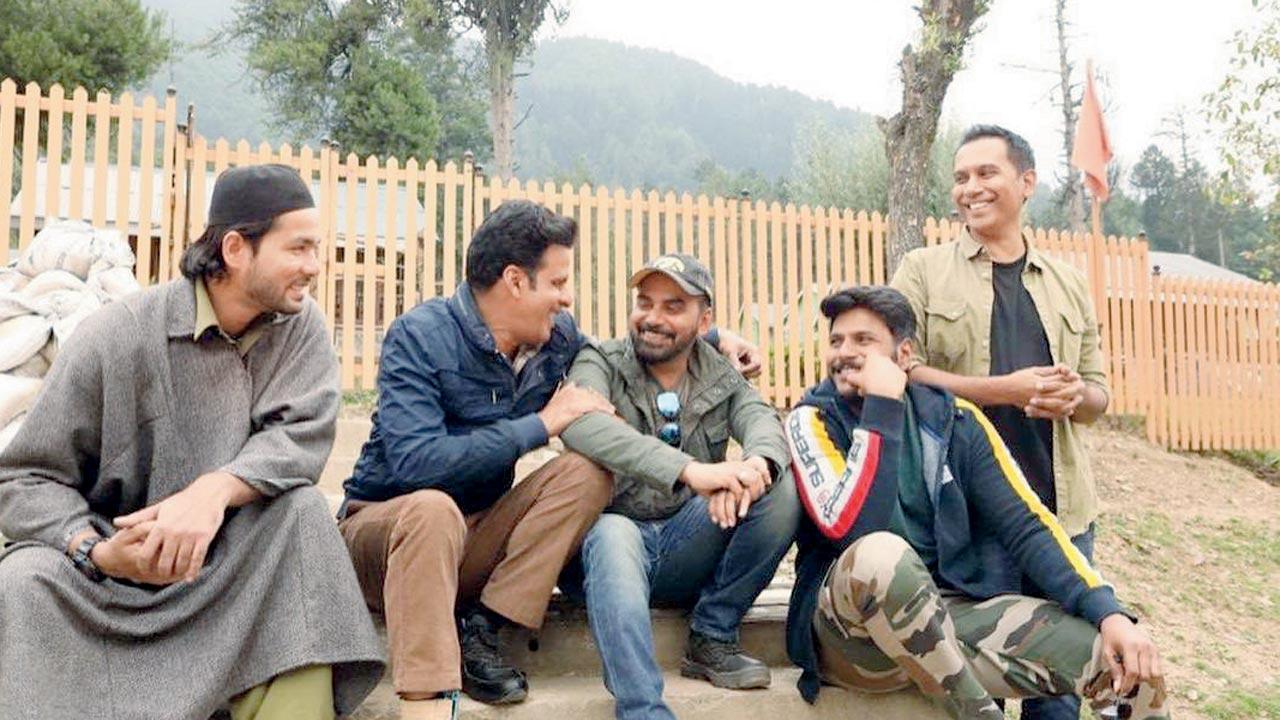 Manoj Bajpayee-led The Family Man is one of Amazon Prime Video India’s most successful offerings
Manoj Bajpayee-led The Family Man is one of Amazon Prime Video India’s most successful offerings
Flavors (2003) as an ensemble cast, slice of life comedy/drama is superior to its then sub-genre, I realise, having caught it on YouTube recently. This is also the same time a shrub of English language Indian films, made by directors for an audience more at ease with English, was growing in India as well. Possibly helped, if not heralded by the cult-like success of Kukunoor’s Hyderabad Blues (1998).
Rahul Bose was almost the poster boy of this Mumbai sub-genre — English August, Snip, Split Wide Open, Everybody Says I’m Fine… Soon enough, Bose once told me, producers in Bombay figured that if they simply changed the film’s language from English to Hindi in, say a movie like Jhankaar Beats, the audience multiplies few times over, automatically. That was the end of the English vinglish shrub!
Raj & DK suggest they knew this already: They knew their “sensibilities were niche” to start with, especially making a “small film” about Indian-Americans, in America, which was not going to be “mainstream, commercial, anyway.” If they stuck to English, even that small audience would get shaved off by many eventually picking up the picture [pirated] online. How do you widen that niche? “By [at least] taking the whole country as our audience, rather than one state [Telugu].” Hence Hindi, which is what Flavors is mostly in.
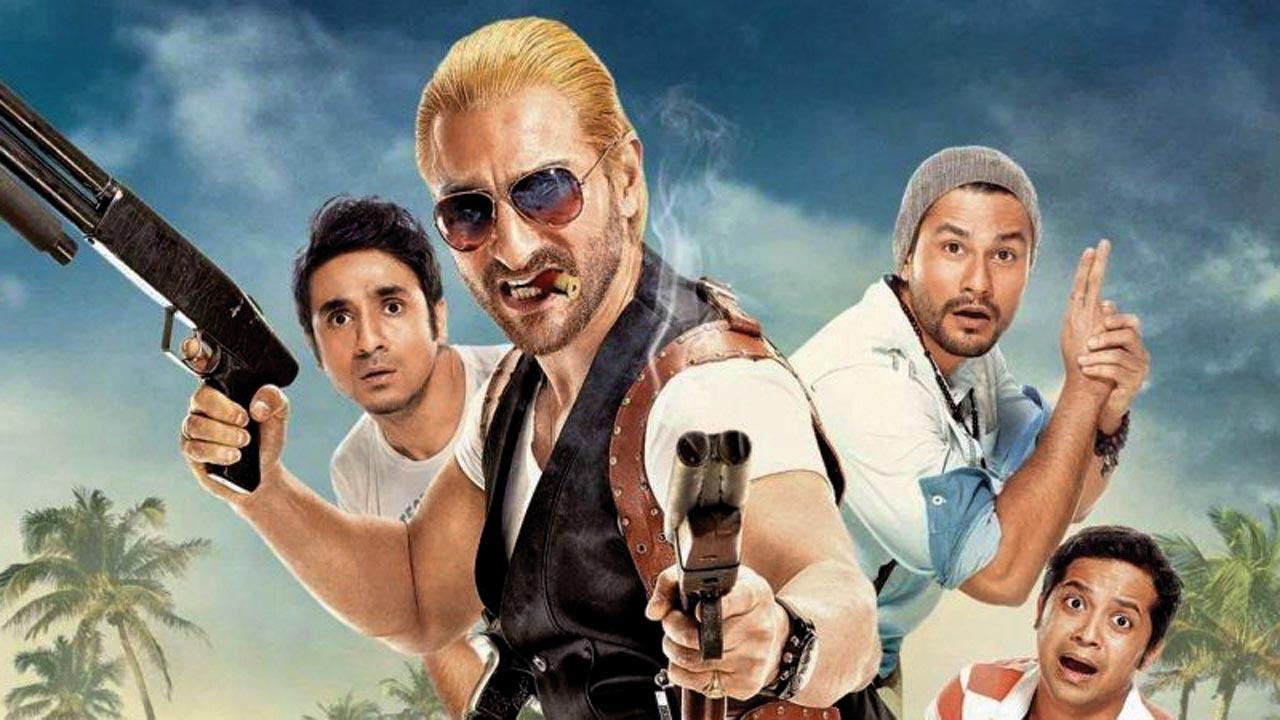
A decade-and-half later, with the advent of OTT platforms in particular, DK says, “We’ve come to a place, where we are letting the characters speak the language they are most comfortable in. A case in point being The Family Man, Season 1 & 2. While the primary language is Hindi, there are characters who speak English, Tamil, Malayalam, right? That’s a nice space to be in.”
In fact, given the setting —around hideouts of Sri Lanka, among militants of LTTE —The Family Man Season 2 could, for a fair portion, pass off as a Tamil series altogether. And no one seemed to mind, even as it was aimed at a mainstream, family audience — bachhe, boodhe, jawaan — otherwise unused to subtitled entertainment. The other thumb-rule The Family Man Season 2 broke was the ‘curse of the second season’ — the sequel never living up to the love for the original. The post-screening excitement went a few notches up in fact.
But we’ve jump-cut too far. Might be a good idea to go back to DDLJ’s Raj & DK, college mates from SVUCE, who went their separate ways, although within America. They stayed in touch with each other, and with their shared infatuation for films.
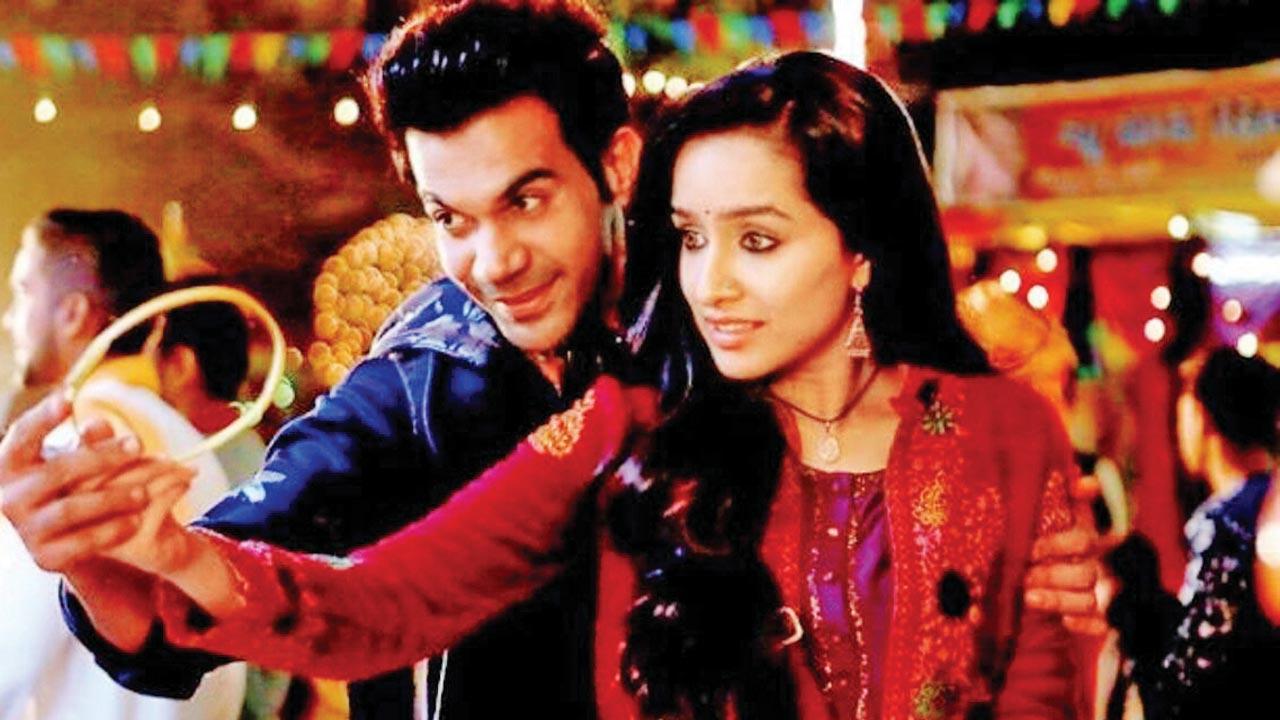
Raj hated his job: “It was a huge struggle for me and it kind of gets reflected in Shrikant Tiwari [in The Family Man], being stuck in a job.” “Actually you’ll find this comment on corporate culture in a lot of our films,” DK says, although he wasn’t particularly going through a hard time. He jokes, “By now if we hadn’t got into movies, I’d be the founder of Amazon.”
There are many such sarcastic ones slipped in, with a deadpan expression, throughout this conversation. Which is quite emblematic of their works too — all of which, in some form or the other, have been comedies. Even while they deal with zombies, ghosts, spies or Shor in the City! DK seems the more fun/chilled/gregarious one, while Raj comes across as the serious sort. Although it’s hard to tell for sure.
In the US, working their corporate jobs, living out their long-distance friendship still, Raj was based in Detroit; DK was in Minneapolis: “a significant distance.” At some point, they decided to test their filmmaking skills with a short film, that they shot in Detroit.
DK recalls, “Every Friday, I used to wrap up my software job, have a flight to catch, land in Detroit, we’d shoot Saturday, Sunday, and I’d catch the first flight back on Monday. We did this for about six to seven weeks in a row.” “And he holds the record for missing the return flight seven times in a row,”
Raj reminds.
The wrap party, after the schedule, may have been the reason, I’m pretty sure. “No man,” sighs DK, “I am telling you, we are engineers. We didn’t know the concept of a wrap party. We were these people sitting around and planning stuff.” Raj chips in, “We are probably the sanest filmmakers you would associate with a film like Go Goa Gone!”
Even after their debut feature Flavors, Raj went back to his day-job, and DK had been a consultant all along anyway. This prompts DK to offer a piece to aspiring filmmakers, “Don’t quit your day job just yet — keep it going. You will need money, once you’ve used up every ounce of savings to make your first movie. You won’t know when you are going to make that money back.”
This is a cautionary, practical note, to keep both Indian parents and the bank teller happy — quite separate from the ‘3 Idiots’ credo of simply chasing a chimera in a vacuum.
But you gotta get a regular job first, no? Raj & DK held highly employable professional degrees. It’s not common among artistes. Especially if you consider the popular, although debatable theory, on the right and the left brain — wherein the former primarily controls our creative impulses; while on the latter, rests the analytical/logical side. Both never being equal for all.
In mentioning this theory, I may have chanced upon how Raj & DK actually function as a successful writer-director unit. Not that DK can have another nickname, unless you add Bose to tick him off, Raj says, “DK is also known by everyone as Logic King. I am extending logic to a broad sense of the term — understanding sensibilities, structure [of a script], and if it makes sense for a scene or character to be somewhere. That’s his core strength. [With him around] I’ve stopped using the left side of the brain. He is just technically super-sound — from cinematography, that is dealing with the DoP, to editing, even VFX. That would be where I’d fall back on him, and not think too much after.”
On his part, DK believes, “Part of being a film director, and I say this as a writer-director, involves art, yes. But it involves structuring, planning and
analysing everything else as well. It’s not a pure art-form as, say, composing a song, or painting, perhaps — those are pure art forms, which need only that burst of creativity. Of course as a filmmaker, you need that burst of creativity too. But creativity alone will make you look like a madman going around — with a bunch of ideas in your head, that are not structured right. You need to bring them into a format that makes sense as a story — one scene flows to the next, and a character graph that follows. There is also so much organisation involved. It’s everything around that makes [the art] happen.”
As for Raj’s role in the separate right- and left-brains seamlessly complementing, DK says of his partner, “I am trying to find the right word. I think the word is ‘disrupt’. Right when you think it is all good, Raj is — no, this is not good, and that is not good. Let’s redo all that! He is looking at all these small things — this guy doesn’t look like a millionaire, not old/young enough, he’s not saying it right, not wearing the right clothes…”
Raj obviously has a complaint. He doesn’t think DK is making him sound right — after he’s heaped his partner with all the compliments! But of course, DK is referring to perfectionism I guess — a cliché Aamir Khan has lived with all his life for similar reasons.
But Raj agrees, “People [from the set] will call and say, ‘I think, sir, you better come to the location’. And DK will say, ‘You better! I have said okay to it, but don’t complain later’. Invariably I have gone to a place that was done/locked, and said, ‘I like this, and this doesn’t work.’ People are like, ‘F*****, I knew it!’”
Although Salim Khan and Javed Akhtar never formally directed films, as Bollywood’s most successful screenwriting pair, the same was said of their individual strengths too. While one (that is Javed) looked into the minutiae of scenes, the dialogues, and the unsaid; the other (that is Salim) was more into getting the wider expanse, and the larger picture right.
It helps that Raj & DK write films together first, and by the time they’re on set, “most issues have already been hashed over.” The approach to filmmaking that is common between both though, and this, they attribute to their educational training, is “reverse engineering”. Which is really how they learnt to make movies. As Quentin Tarantino says when asked if he ever went to a film school, “No, I went to the films!”
Up until Goa Goa Gone, Raj & DK say they’d never been on a film set — as opposed to shooting on location. Let alone assisted anyone, or trained under a master. DK feels, “The engineering background came in handy in structuring and analysing whatever good creative ideas we could get. And then we reverse-engineered how somebody else made a movie.”
Raj explains further, “We had to teach ourselves. You are so familiar with the films you watch. That is the only familiarity you have — to, say, [Martin] Scorsese or [Steven] Spielberg, or whoever you are watching that you can connect with. Now the question is, can you make it as good, or even close enough? The idea was to figure out how a scene was made, and why is it looking so good?”
Scorsese or Spielberg are obviously the more obvious examples to emulate, or learn from. But if you glean through Raj & DK’s top 40 favourite films of all time, as they listed in a blog recently, there’s essentially a wide smattering of late ’90s indies, chiefly American, but also otherwise.
Invariably a list of popular cults within it too — Pulp Fiction, Fight Club, Boogie Nights, Lock Stock and Two Smoking Barrels, etc. There is hardly an Indian film — okay, I spot Varma’s Siva (1989, in Telugu). Oh, no Bollywood movie at all? There is Hrishikesh Mukherjee’s Gol Maal (1979)!
DK admits, “Honest truth be told, Gol Maal also, I watched first in Tamil; the Rajinikanth version. Then someone said, oh you loved the Tamil version? You should watch the Hindi movie now. And which was really good. That’s why it made it to the list. Otherwise the Tamil version would have!
Raj: “Correction here. There was [only] one Hindi film, yes, but quite a few regional films. That is what we were watching.” DK: “We used to watch Khuda Gawah [1992] — just one big marquee film used to come where we were anyway. That’s all we would get to see. And our [knowledge of] Hindi is not exactly ‘Mahabharat Hindi’, so you pick anything you understand!”
This might sound like a handicap. But it’s proven to be an advantage for Raj & DK in Bollywood. The voice that’s developed seems wholly non-derivative to popular Hindi cinema from the past. The western indie influences are strong alright, again not in a sense of a rehash — as writers, they tend to look within to mine stories still. In each of their spheres, whether in corporate jobs, or two young men in Mumbai out to make Hindi movies, they’ve operated like the observant outsider — piling on experiences into entertaining fiction.
DK says, “Even if you see our earlier films, until a few years ago, I could draw parallels to each character and say where those traits were picked from — from real life, mostly.”
We go over a few instances. Starting with Bombay films itself: The scene, for example, in Happy Ending, where Govinda’s character (who plays a Bollywood star) is offered two DVDs for a script — Meet the Parents, first half; Meet the Fockers, second half.
This happened to them: “It might be slightly exaggerated, but the idea came [from the fact] that these tapes were given to us [by a producer] to direct. The exact same movies. And when we said, not our genre, he immediately came up with two more DVDs — Analyze This, first half; Analyze That, second half!”
Even the names of characters in Stree (Jana, Vicky, Narendra etc) are picked from their friends growing up in Tirupati, including the “bizarre” refrain/idea of “making friendship with a girl,” which had become buzzwords around them. “She is available for friendship. What does that even mean? How far does this friendship go?” Raj laughs.
The young girl Dhriti (Shrikant’s daughter) in The Family Man is inspired by Raj & DK’s friend’s daughter, although she has disowned the character since the second season. The boy Atharva is partly based on Raj’s nephew.
Likewise, the pesky boss lording over Shrikant Tiwari in The Family Man 2 is an amalgamation of all the crappy, techie bosses they’ve worked with, and wished to publicly drill a hole in their heads. What about: “Don’t be the minimum guy”? I’ve come across a few websites explaining the ‘minimum guy’ matrix/concept as a legit HR principle! It’s something that Raj & DK simply came up with.
Raj says, “We were just looking at different quotable quotes on walls. All of which we had seen before — don’t be this, or that, or rise up, stuff like that. We just wanted to coin a word, in a kind of incorrect English slogan, inspired by Trump.”
It’s a sort of continuation too, DK recalls, “There was another phrase in Go Goa Gone, where the characters say, ‘What do we know? What have we learnt?’ They keep saying this. It’s a slogan from the telemarketing company they work at. We also wanted to do a little ode to Steve Jobs, so we put his picture up there, with that Steve Jobs quote that we made up.”
I’m actually quite curious about how Go Goa Gone got made at all for wide theatrical release, with Saif Ali Khan in the lead — a movie ahead of its time, since there hadn’t been an A-grade zombie Hindi film thus far, in order to do a send-up of the genre itself! It’s like the comic spoof appeared before the real thing. That green-lighting seems easy peasy enough. Kunal Kemmu had already been cast in the film. He took Raj & DK to meet Saif, who first wondered, will people in India watch a zombie film?
DK says, “We told him only half the story. At that interval point, he was literally rolling on the floor, laughing. Especially when he heard his gangster character with the name Boris, who is Indian, pretending to be Russian, to blend in, because he’s in Goa. That we’d spike and colour his hair blonde, he’ll have tattoos, and a shot gun. Halfway he said, ‘Yeh toh ch****apa hai, aur mujhe yeh karna hai [got to do this dumbf***ery!]”
The film remained within its original zone, despite the mainstream/Bollywood frills attached to it. Just as their second film in Mumbai — Shor in the City (2010); a manic take/tribute to the city itself, that brought them critical notices, and probably first placed them on the Bandra-Andheri map.
Watch the complete interview here:
They had already planned the film as a low-budget indie, with multiple newcomers, and funds sourced from friends — a big chunk kept aside for having the Indian-American star Sendhil Ramamurthy on board, who was already charging significantly less than his market fee.
Ekta Kapoor was looking for scripts for her label ALTBalaji. Raj & DK gave her the idea they could work on, while casually mentioning the movie they were going ahead with anyway. She came on board Shor in the City. The film was a smooth sail, although DK says it took them five years to cast for their first film in Mumbai, 99 (2009), which also had Vinod Khanna in a key cameo.
There are two ways to decode the unlikely Bollywood success of Raj & DK in a city that’s traditionally been wary of attempting too many untested concepts in the mainstream. For one, they simply don’t sit on scripts. I cite to them the example of a friend who once met the Japanese master Akira Kurosawa. Kurosawa told him, you’ve got to be like a magician pulling out scripts like playing cards from various pockets — from under the shoe, behind the collar — depending on whatever might interest the producer.
That’s really how it works for us, DK says. They’ve been constantly writing, all these years. Raj remembers, “We were talking to a few filmmakers the other day, and they were struggling to make another film. We went back and counted scripts/ideas like poker chips, and realised, we have 20-plus scripts, and 70 ideas at various stages of development. The energy goes there!”
Also the mental distance from Bollywood allows them to approach their work without preconceived notions, for better or worse. Of all their achievements, Raj & DK may go down as rare filmmakers to pull off a shoot with Govinda, without delays, and no heartache whatsoever! “Oh no, he was amazing — only so happy to back before the camera.”
DK admits, “When I see Rajinikanth or Chiranjeevi in the South or Shah Rukh Khan or Salman Khan, that aura stays no matter what you say. But if you are going to work with somebody, you get into the nuts and bolts of it. We were meeting Kamal Haasan last week, and we kept thinking after the long meeting, if we should take a selfie, but we couldn’t!”
Raj extends the same worldview, “I don’t think we are fan boys, that way. Even people used to ask us, who is your favourite actor, director? Well, I like this film, and this is what I learnt from that film. But there are of course a few people, actors, musicians, we are in awe of. I have basically made a list of seven people I would not shy away from asking for a picture with.”
Subsequent interviewers must ask Raj who those seven are. I realise it’d be an intrusion on their time. You can barely profile Raj & DK looking back, since there’s just so much they’re working on simultaneously. DK lists, “Our series with Shahid Kapoor and Vijay Sethupathi is in production. We wrapped up work on a cool period, satirical comedy series, set in 5th Century, called Golconda. We have another series on the floor. We have Citadel, produced by Russo Brothers, that we aim to start shoot in a few months. Then there is The Family Man 3. There are a couple of films to start as well, since they took a backseat because of the pandemic…”
Speaking of the Russo Brothers, the most commercially successful director duo in the world — in fact, all other director teams we know are siblings; whether in Mumbai, Abbas-Mustan (Burmawalla), or abroad, the Coens, Wachowskis… Not Ashwiny Iyer and Nitesh Tiwari, but they are spouses. A natural creative chemistry that is hard to match. Very non-DDLJ Raj & DK, 48, only three months apart (Raj is elder), in that sense, are exceptions.
This conversation over Zoom is taking place from their respective homes, which is to say that while they seem like brothers from other mothers, indeed sharing their left and right brains, they do live separately.
Raj has to leave the chat early, since his guests are over for his father’s birthday party. DK wishes, “Say happy birthday to your dad.” Raj replies, “Okay, cool. Please say happy birthday to your mom too [same day].” Okay then.
 Subscribe today by clicking the link and stay updated with the latest news!" Click here!
Subscribe today by clicking the link and stay updated with the latest news!" Click here!










